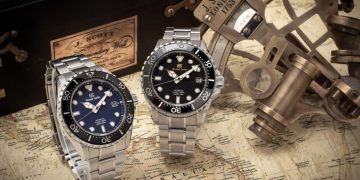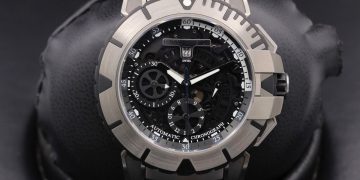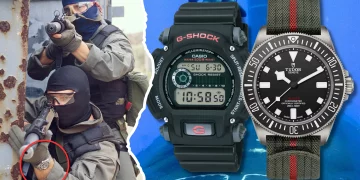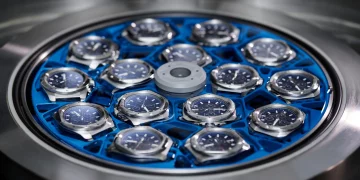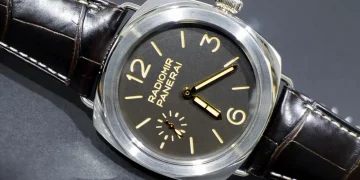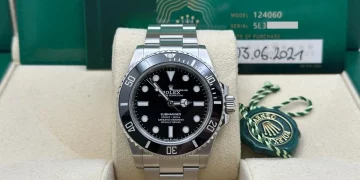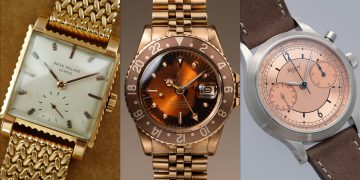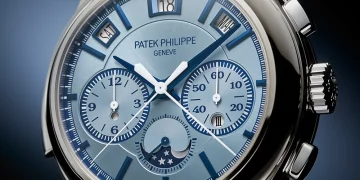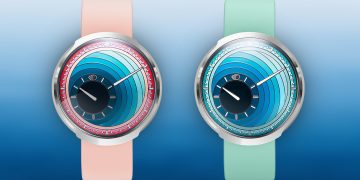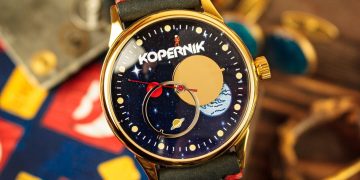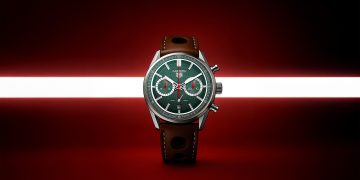Introduction: The Water Resistance Myth
For many, a “water-resistant” watch offers peace of mind, knowing that the timepiece can endure daily splashes, sweaty workouts, or even an occasional swim. But is water resistance truly as foolproof as we believe it to be? The reality behind water-resistant and waterproof watches may not align with what we’ve been led to think. Most manufacturers promote water resistance as a key feature, but how accurate are those claims, and what does the rating really mean in practical terms?
This article aims to explore the truth about water resistance in watches, explaining the limitations of the ratings and offering advice on how to better protect your prized timepieces from water damage. Understanding how water resistance works—and where it fails—can save you costly repairs and keep your watch in great condition for years.
Understanding Water Resistance Ratings: What Do They Really Mean?
Water resistance ratings for watches are given in meters (m) or atmospheres (ATM), but these measurements can be misleading if not properly understood. Often, consumers assume that a watch rated for, say, 50 meters is safe to wear while swimming in the pool. However, the rating does not equate to the depth you can safely submerge your watch.
The water resistance rating on a watch is based on laboratory conditions, and the watch is tested with static pressure in controlled environments. This is quite different from real-world scenarios involving dynamic movement, temperature changes, and the impact of sudden splashes or diving.
Here’s a breakdown of common water resistance ratings and what they actually mean:
30 Meters (3 ATM)
- What it means: Suitable for light splashes, such as washing your hands or getting caught in the rain.
- What it doesn’t mean: Not safe for swimming, showering, or submerging in water.
50 Meters (5 ATM)
- What it means: This is generally suitable for light swimming or snorkeling in calm conditions.
- What it doesn’t mean: Not suitable for diving or prolonged immersion in water.
100 Meters (10 ATM)
- What it means: This rating is considered safe for most water-based activities, including swimming, snorkeling, and water sports.
- What it doesn’t mean: Not suitable for scuba diving or high-pressure environments.
200 Meters (20 ATM) and Above
- What it means: Watches rated 200 meters or higher are generally designed for professional diving or activities requiring greater pressure resistance. These watches are often equipped with additional features such as screw-down crowns, extra-sealed cases, and robust case backs to prevent water intrusion under pressure.
- What it doesn’t mean: You shouldn’t assume that such watches are invincible to water damage. They are designed for specific activities and should be used accordingly.
300 Meters and Beyond
- What it means: These watches are built for deep-sea diving and can withstand significant water pressure.
- What it doesn’t mean: While the watch is robust, it doesn’t mean it’s immune to damage from improper use or wear, such as sudden temperature changes or exposure to seawater.
The Major Misconception: Static vs. Dynamic Pressure
One of the key problems with water resistance ratings is the distinction between static pressure (tested in laboratories) and dynamic pressure (real-life conditions). A watch rated to withstand 100 meters of water pressure in a static test is not necessarily designed to withstand the same depth during activities like swimming, diving, or even high-speed boating, where movement and sudden water impacts create dynamic pressure far greater than that in a static test.
When moving in water, your watch is subjected to forces that can compromise seals and push water into the case more easily than stationary immersion. This is a major reason why manufacturers often recommend that watches with water resistance ratings lower than 100 meters should not be used for active water sports.
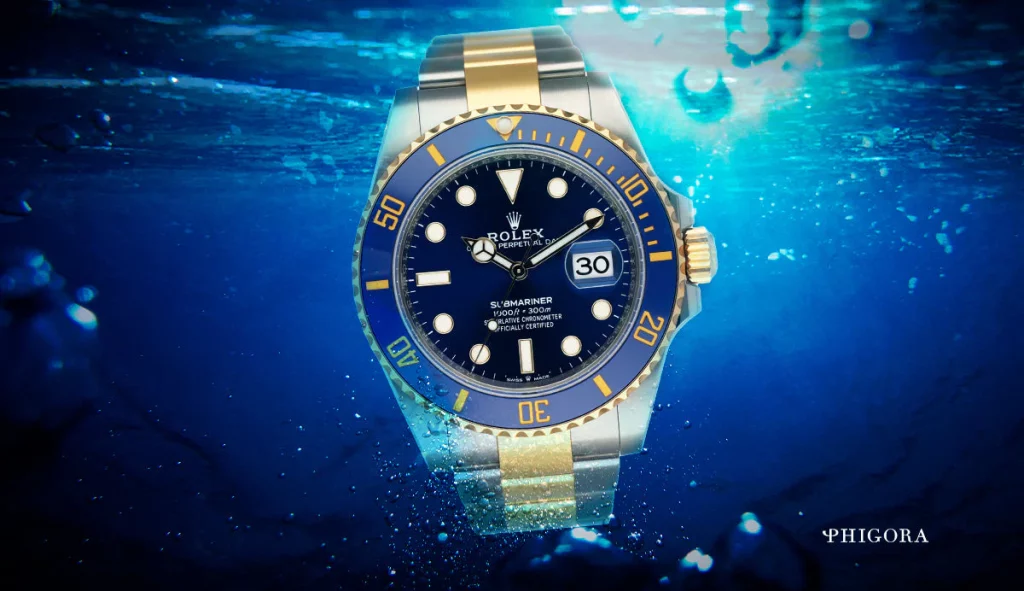
The Truth Behind the “Waterproof” Label
Despite the term “waterproof” being used on some marketing materials, it’s important to understand that no watch is truly 100% waterproof. The term “water-resistant” is a far more accurate description of a watch’s capabilities. The word “waterproof” implies an absolute protection against water damage, but that is not the case. Even high-end divers’ watches can suffer from water intrusion if the seals degrade, the watch is exposed to extreme conditions, or if they have been subjected to impacts.
Modern technology and materials have certainly improved water resistance in watches, but over time, seals can deteriorate due to environmental factors like heat, moisture, and wear-and-tear. Watches that claim to be waterproof may still allow water penetration in certain scenarios, such as during rapid temperature changes (from a hot shower to a cold pool, for example) or after years of usage where gaskets become compromised.
Common Scenarios Where Water Resistance Fails
- Sudden Temperature Changes Watches that are exposed to extreme temperature fluctuations can face issues with condensation or fogging inside the case. This happens when the air inside the watch expands or contracts due to heat or cold, causing moisture to accumulate, which could damage internal components.
- Exposure to Chemicals Chlorine, saltwater, and even soaps can degrade the seals of a watch over time. Watches designed for everyday wear might not be able to withstand the harsh chemicals found in swimming pools or saltwater environments.
- Impact with Water If you’re swimming or diving with a watch, you might not realize how much impact the water creates when you dive or swim quickly. This dynamic pressure can cause seals to shift or loosen, compromising the watch’s water resistance.
- Worn Gaskets and Seals Over time, the rubber gaskets and seals that keep your watch water-resistant will naturally wear down. Without periodic maintenance, such as having the gaskets replaced, even a watch with a high resistance rating can begin to suffer from leaks.
How to Protect Your Watch from Water Damage
- Know Your Watch’s Limitations Understand your watch’s water resistance rating and avoid pushing it beyond those limits. For example, don’t take a 30-meter-rated watch into the pool or take a 50-meter-rated watch snorkeling. Always know the maximum water exposure for your timepiece and respect those limitations.
- Regularly Inspect Seals and Gaskets Water-resistant seals and gaskets can degrade over time, especially with frequent exposure to moisture or temperature changes. It’s important to get these checked and replaced if necessary, particularly for older watches or those frequently exposed to water.
- Avoid Sudden Temperature Changes Be mindful of how your watch reacts to sudden temperature changes, which can cause condensation to form inside the case. For example, avoid wearing your watch in a sauna or immediately plunging it into cold water. Instead, allow the watch to adjust gradually to temperature changes.
- Use the Crown and Pushers Carefully The crown and pushers on your watch are the most vulnerable points for water intrusion. Always make sure the crown is tightly screwed down or pushed in before exposing the watch to water. Even if your watch is rated for high water resistance, improper handling of the crown can still lead to leaks.
- Regular Maintenance and Testing If you frequently expose your watch to water or wear it for activities like diving, consider having the seals checked and replaced regularly. Some watchmakers can conduct a pressure test to ensure your watch’s water resistance is still intact.
- Keep Your Watch Clean Saltwater and chlorinated water can leave residue on your watch, which can damage the finish and seals over time. After exposure to either, rinse your watch with fresh water and dry it thoroughly to prevent damage.
- Store Watches Properly If you’re not using a watch for water activities, it’s a good idea to store it in a safe place, away from moisture and extreme temperatures. Watches with leather straps should be especially protected from water, as leather can become damaged or lose its shape when exposed to moisture.
Conclusion: The Reality of Water Resistance
While water resistance is an important feature for many watches, it’s important to understand its limitations. No watch is truly “waterproof,” and each watch has a specific water resistance rating that should not be exceeded. By understanding the true nature of water resistance, you can protect your watch from unnecessary damage and prolong its lifespan. Always respect your watch’s water resistance rating, and regularly maintain the seals and gaskets to ensure that it continues to perform as expected.


